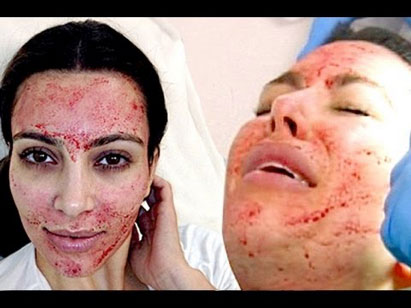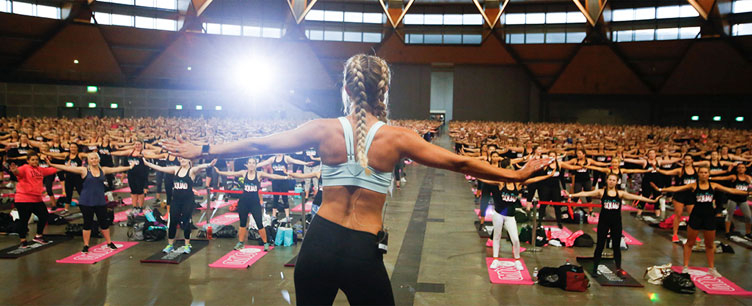If you want to be ‘beautiful’ by today’s beauty industry standards, you’d better be prepared to part with some cash, writes Helen Barcham.
Every work morning, as I wait to board my bus from Parramatta station to the Western Sydney University campus, I find myself meditating on the in-your-face advertisement plastered on the window of the beauty clinic across the street.
The advertisement is not remarkable in the context of today’s advertising culture, but it is nevertheless alluring. It features several attractive, happy and confident-seeming women (and one man) alongside the text, ‘What’s your You Ness?’
This image exemplifies beautifully the paradox of today’s beauty industry.
The clinic promises to respect and amplify women’s ‘youness’ – which they define as ‘what makes you, well… you’. And yet, this promise is sold to women through a smorgasbord of products and services that, paradoxically, orient women’s bodies and psyches towards embodying the cultural ‘beauty’ ideal.
According to its website, the clinic promises to hit ‘reverse on sagging skin’ through skin tightening treatments; ‘leave others to guess’ about one’s age through cosmetic injectables; and promises women they’ll be ‘ready at a moment’s notice’ through laser hair removal. Ultimately, the promotion of these beauty regimes tells us that youthful or youth-like, thin and hairless bodies are the cultural ideal to which women should aspire. ‘Youness’, then, is a ‘false’ economy, re-routed to ‘sameness’.
Pain and Suffering is the Price to Pay for Looking and Feeling Good
In order to acquire the happiness and confidence of the models in the advertisements, women are, ironically, first required to endure pain and suffering in the form of endless laser treatments, surgical needles, chemical peels, injections, and take-home creams, among other body work.
Pain and suffering, we are told in today’s therapeutic society, is a necessary requirement of actively ‘looking after oneself’. As the adage goes, ‘no pain, no gain’.
This suffering is no mere coincidence or by-product, but a politically organised normalising apparatus, strategically pressed upon women to render them ‘passive… controllable and near completely docile’ according to its critics. It assembles them as masochists who will spend endless time, money and energy pursuing the beautiful life.
Technologies of the Self

With the rapid advancement of technology and its insinuation into everyday life, the beauty industry is able to create new solutions as quickly as it’s able to create new flaws. The terms of reference for looking and feeling beautiful are constantly being modified and refashioned.
The impermanence and elusiveness of the ‘goal posts’ helps inscribe women deeper into the self-perpetuating cycle of affective and aesthetic labour. Perfection, then, becomes untenable. Only failure to achieve perfection is real. And, with ‘failed bodies’, come new cycles of pain and suffering.
Today’s beauty regimes – some of which are legally required to be overseen by doctors and nurses – are conveniently available at most local shopping centres through ‘shop now and pay later’ arrangements. The industry is determined to broaden the pool of consumers and present the cultural ideal as within arms-reach of all.
The industry wants to naturalise beauty regimes so that its power and influence is camouflaged in everyday life.
Charismatic Capitalism
The beauty industry’s endorsement of cultural ideals of perfect womanhood are hardly new. But the way in which it has co-opted a discourse of care is. It is refashioning itself from being an industry long-accused of serving patriarchal ends to an altruistic force helping women to ‘be the best versions of themselves’.
This refashioning helps it to remain culturally relevant while disguising the gendered normalisation that underpins it.
Take, for example, charismatic Australian ‘wellness coach’ Ashy Bines, who boasts a Facebook community of close to four million people, most of whom are women. Her business model appears to lean heavily on helping women get thinner through diet supplements, fitness and meal regimes, and memberships of her ‘Transformation Centre’. These selling pursuits are funnelled through the language of care and female empowerment.
For example, her manifesto states that she is fostering ‘a community of positive and proactive women who strive to be their best’. This benevolent statement is coupled with ‘inspirational’ images of female solidarity and empowerment.

Through this discourse of care, Bines is presented as an expert putting her genuine care for the health and happiness of the women she serves first. But through this articulation, she strategically distances herself from the wider beauty industry and seeks to evade associated claims of profiting and monetizing women’s insecurities.
Her business model incorporates what we might call ‘charismatic capitalism’. This concept includes techniques whereby selling masquerades as altruistic service and profit orientation is submerged. This kind of selling helps many in the beauty industry transform selling into nurturing functions such as ‘teaching’ and ‘sharing’, which helps to obscure and conceal the repressive gendered body-policing that sits at the core of their offerings.
For many women, it’s becoming increasingly difficult to untangle products and services that might enable them to ethically self-care from an industry that thrives on promoting culturally limited ideals around beauty and desirability.
But, as political theorist Claudia Leeb reminds us, suffering is the physical moment when the negative conditions of capitalism are both felt and exposed. And precisely the moment when transformative agency becomes necessary and possible.
Donate To New Matilda
New Matilda is a small, independent media outlet. We survive through reader contributions, and never losing a lawsuit. If you got something from this article, giving something back helps us to continue speaking truth to power. Every little bit counts.





